10 Bucket List Australian Wildlife Encounters
Original content owned & copyrighted by Green Global Travel. This post is brought to you in partnership with Australian Wildlife Journeys. But our opinions remain our own, and we will never compromise the integrity of our responsible travel mission. No other country offers up the distinctively quirky array of wildlife in Australia. There are tons of native animals in Australia, and many of Keep Reading The post 10 Bucket List Australian Wildlife Encounters appeared first on Green Global Travel.
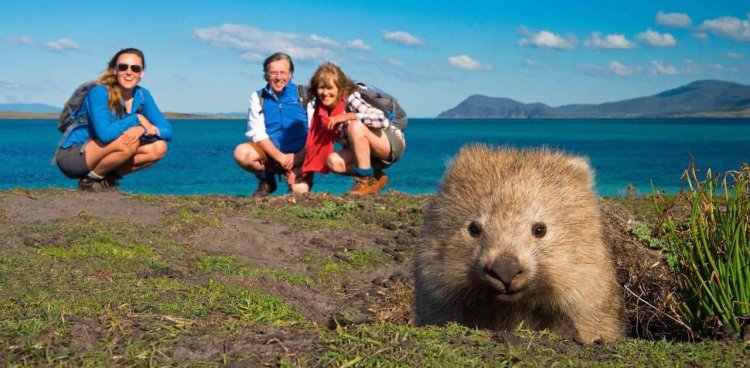
Original content owned & copyrighted by Green Global Travel.
This post is brought to you in partnership with Australian Wildlife Journeys. But our opinions remain our own, and we will never compromise the integrity of our responsible travel mission.
No other country offers up the distinctively quirky array of wildlife in Australia. There are tons of native animals in Australia, and many of these animals are found in Australia alone.
A trip Down Under offers your only chance to see these unusual Australian animals in the wild, so these unique animal experiences are likely a once-in-a-lifetime thing.
Australian wildlife is so far removed from the fauna you’ll find elsewhere in the world because they have evolved differently than animals from other places.
Aussie animals are also diverse because the continent is home to so many different habitats, including vast deserts, the world’s oldest rainforest, and the world’s largest coral reef.
Wild Australian animals range from cute and cuddly (see: Koalas, Quokkas, and Wombats), to downright terrifying (see: Saltwater Crocodiles and Tasmanian Devils), to just plain weird (see: the Platypus).
Read on for our guide to 10 Bucket List Australian Wildlife Encounters, with help from Australia Wildlife Journeys, which offers eco-friendly big animal encounters, exotic animal encounters, and other chances to see wildlife in Australia.
 Kangaroo & Joey courtesy of Australian Wildlife Journeys
Kangaroo & Joey courtesy of Australian Wildlife Journeys
Australian Wildlife Encounters Guide
- Koalas (Raymond Island)
- Echidna (Kangaroo Island)
- Humpback Whales (Hervey Bay)
- Crocodiles (Kakadu)
- Platypus (Far North Queensland)
- Sea Lions (Eyre Peninsula)
- Whale Sharks (Ningaloo)
- Red Kangaroos (Murray River)
- Wombats (Maria Island)
- Red Crabs (Christmas Island)
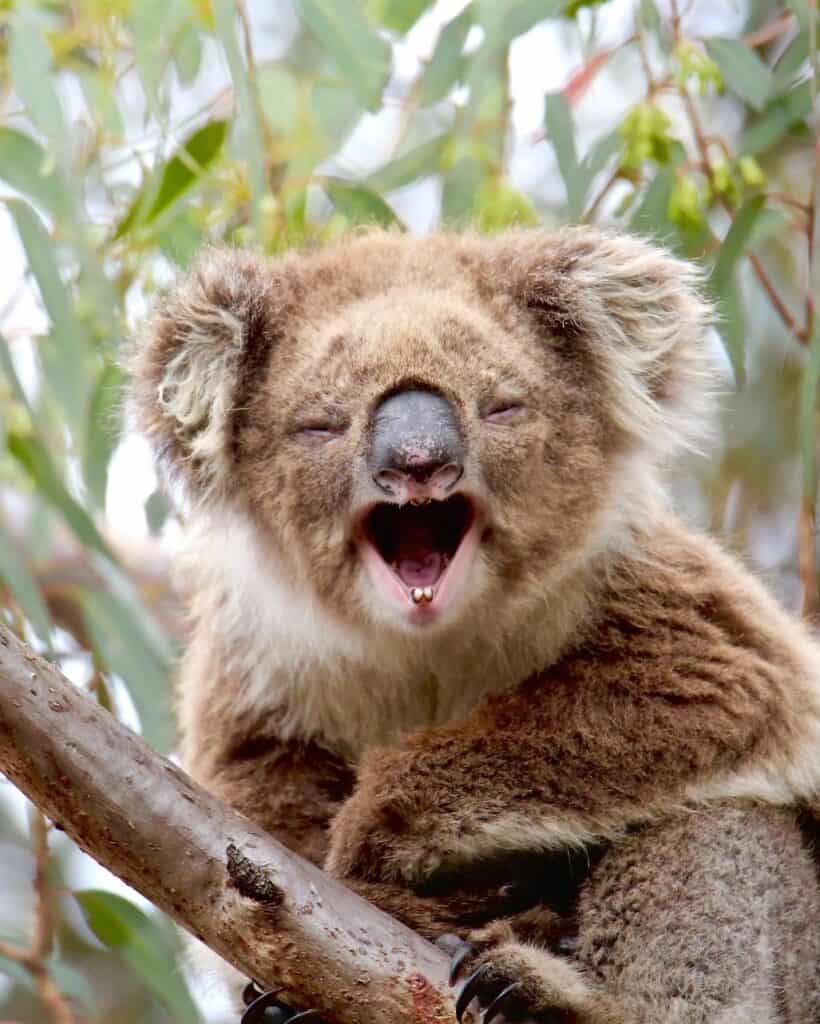 Koala Encounters, photo courtesy of Echidna Walkabout Nature Tours
Koala Encounters, photo courtesy of Echidna Walkabout Nature Tours1. Koalas across Raymond Island
Of all the animals native to Australia, none look more cuddly than the Koala, which is so exceptional that it has its own family and genus.
Koalas are found in Southeastern Australia, where they live in tall eucalyptus forests, as well as in river valleys and inland woodlands.
In warmer areas Koalas are light gray, with shorter hair and longer ears. In cooler climates they’re a darker, brownish color, with longer fur and shorter ears.
Koalas are a little over two feet tall and weigh 10-15 pounds. They feed on eucalyptus leaves, but only around 35 of the 600 eucalyptus species Australia has to offer.
Echidna Walkabout Nature Tours offers the East Gippsland Wildlife Journey, a 4-day, 3-night tour across coastal heathlands, into dense rainforests, and through giant eucalyptus groves.
In addition to Koalas, adventurers can look out for Wallabies, Echidnas, Kangaroos, Monitor Lizards, and tons of birds.
They also offer a 3-day/2-night Private Great Ocean Road tour that explores Serendip National Park and You Yangs National Park in search of Aussie animals, including a canoe trip in search of the Platypus.
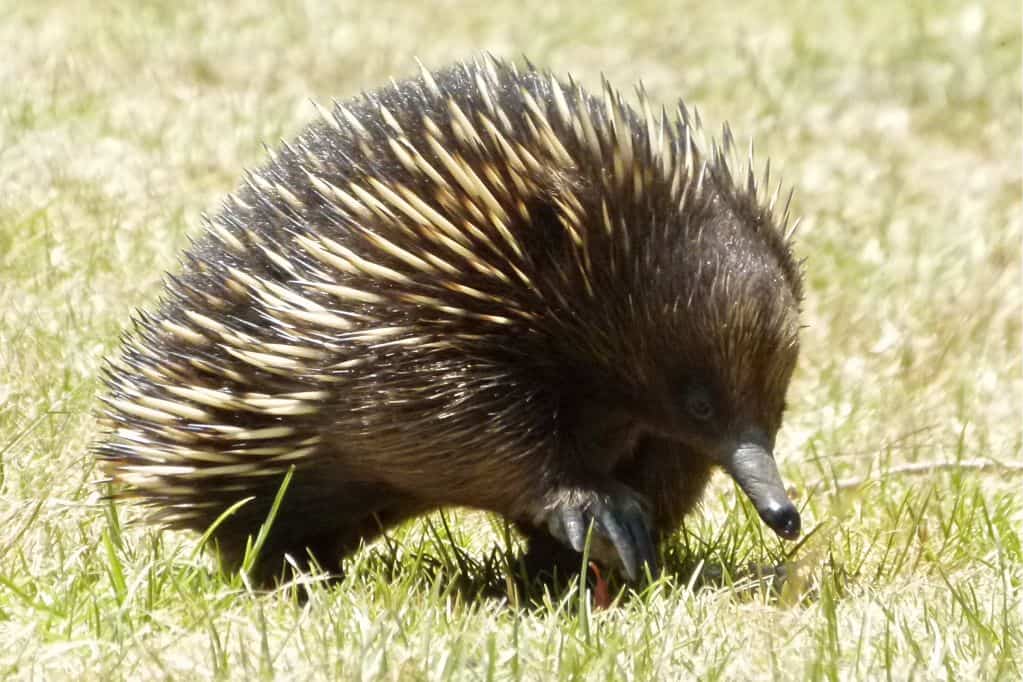 Short-beaked Echidna, photo courtesy Exceptional Kangaroo Island Tours
Short-beaked Echidna, photo courtesy Exceptional Kangaroo Island Tours
2. Learn the Mysteries of the Echidna on Kangaroo Island
The Echidna is a monotreme mammal, which means it lays eggs and lacks teats. Other than the Duck-billed Platypus, Echidnas make up the remaining six species of monotremes.
The Short-beaked Echidna is the only mammal found all across the Australian continent. It is able to adapt to snow at altitude, and sweltering heat in the desert.
Echidnas have sharp spines like a porcupine, and long darting tongues perfect for slurping up ants and termites.
Echidnas are between 18 and 34 inches long and weigh up to 22 pounds. Though spiky, they are a must-see on the list of incredibly cute Australian wild animal encounters.
Exceptional Kangaroo Island has a two-day, one-night Kangaroo Island in Style trip that allows guests to explore Kangaroo Island with award-winning guides Craig and Janet Wickham.
Travelers will visit different island ecosystems and have a chance to spot animals like Echidnas, Koalas, Kangaroos, Cockatoos, Goannas, Sea Lions, and Fur Seals.
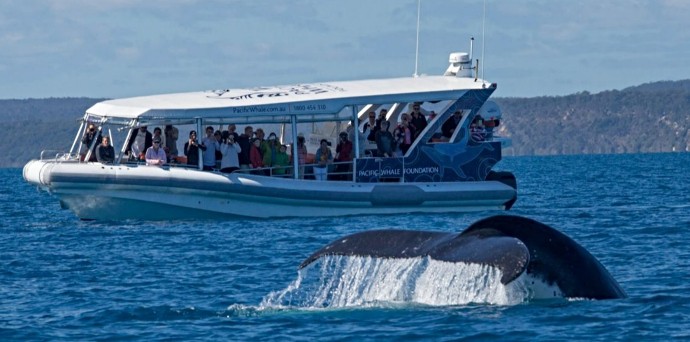 Humpback Whales in Hervey Bay, phot0 courtesy Pacific Whale Foundation Eco-Adventures Australia
Humpback Whales in Hervey Bay, phot0 courtesy Pacific Whale Foundation Eco-Adventures Australia
3. Listening to Humpback Whales in Hervey Bay
While Humpback Whales can be found in many places around the world, in our experience crossing paths with one ranks among the most awe-inspiring animal encounters.
In our eyes, Whales in general just seem ancient and otherworldly.
Humpback Whales are famous for their enchanting songs, which are one of the more complex means of communication in the animal kingdom. The long ballads are filled with an impressive array of moans, grunts, grumbles, and groans.
Pacific Whale Foundations Eco-Adventures Australia has incredible 3-hour tours in the Great Sandy Marine Park of Hervey Bay, the world’s first Whale Heritage Site. Between July and October, the bay draws thousands of whales.
The Ultimate Hervey Bay Whale Watching tour is perfect for seeing some of the most active Humpbacks, with breaches and whale songs to wow visitors. All proceeds support whale research, education, and conservation programs.
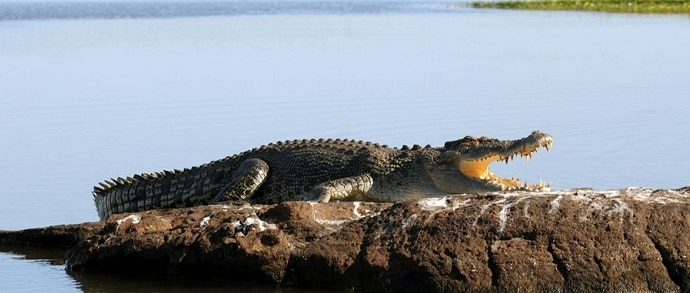 Saltwater Crocodile, photo courtesy of Lords Kakadu and Arnhemland Safaris
Saltwater Crocodile, photo courtesy of Lords Kakadu and Arnhemland Safaris
4. Saltwater Crocodiles across Kakadu
Australia is full of terrifying animals, but Saltwater Crocodiles may just take the crown. They’re the largest of all living reptiles, and can top 20 feet and 3000 pounds.
Unlike other crocodiles, “salties” have broader noses and thicker bodies, and due to their size they become very evident in the dry season, when bodies of water get steadily smaller.
They often laze around in the sun most of the day, hunting at night, and they’re notorious for stalking the banks and ambush-attacking prey.
Saltwater Crocs can swim nearly 20 mph and are known to go into the open sea, using tides to travel long distances.
Lords Kakadu and Arnhemland Safaris has a 6-day, 5-night tour for Crocodile-spotting from April through October.
Their Ultimate Luxury Safari Adventure involves a trip to Fogg Dam, the Yellow Water Cruise, and airboats on Mary River Catchment. Participants may see Crocs, Wallabies, Wallaroos, Goannas, water birds, and much more.
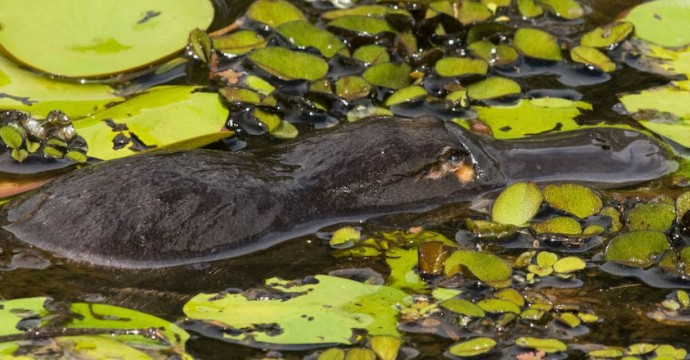 Duck-billed Platypus, photo courtesy of FNQ Nature Tours
Duck-billed Platypus, photo courtesy of FNQ Nature Tours
5. Spotting the Elusive Platypus in Far North Queensland
Endemic to Eastern Australia, the Duck-billed Platypus is in the running for the world’s weirdest animal.
With a beaver-like tail, a duck-like bill, flippers on its feet, and brown fur, it looks like an odd creation from a young child’s artistic imagination.
But the Platypus is very real, and Australia is the only place you can see them in the wild. In fact, they’re considered common in Far North Queensland, thanks in part to a quick breeding cycle.
Platypuses have electroreceptors to help them find food in murky waters. They primarily feed on mollusks and crustaceans in water, but they also eat insects like dragonflies and water beetles on the surface.
FNQ Nature Tours offers a Tablelands & Crater Lakes day tour. It includes lots of birdwatching in the rainforests of the Tablelands, as well as the chance to see Tree Kangaroos, Water Dragons, and Platypuses on Lake Barrine.
 Sea Lions, photo courtesy of Australian Coastal Safaris
Sea Lions, photo courtesy of Australian Coastal Safaris
6. Swimming with Sea Lions in the Eyre Peninsula
Australia is filled with unique land animals, but it also has an enormous coastline. Australian Sea Lions are the only endemic pinniped on the continent.
The Australia Sea Lion is endangered and sparsely distributed from Western Australia to South-Central Australia. Nearly half the population is found in three spots– Kangaroo Island, The Pages, and Dangerous Reef.
They’re extraordinarily agile and playful under the water. And while they’re often referred to as “puppy dogs of the sea,” males can weigh over 600 pounds and grow to be about 8 feet long!
Australian Coastal Safaris offers a 3-day, 3-night trip (Eyre Peninsula Wildlife & Ocean Encounters) to both terrestrial and marine protected areas, including Lincoln and Coffin Bay National Parks.
In addition to Australian Sea Lions, the tour also offers a good chance to see Bottlenose Dolphins, Emus, Koalas, Kangaroos, and Goannas.
This trip can also be extended for an extra day to include a cage dive (or underwater viewing pod) for spotting Great White Sharks near the Neptune Islands.
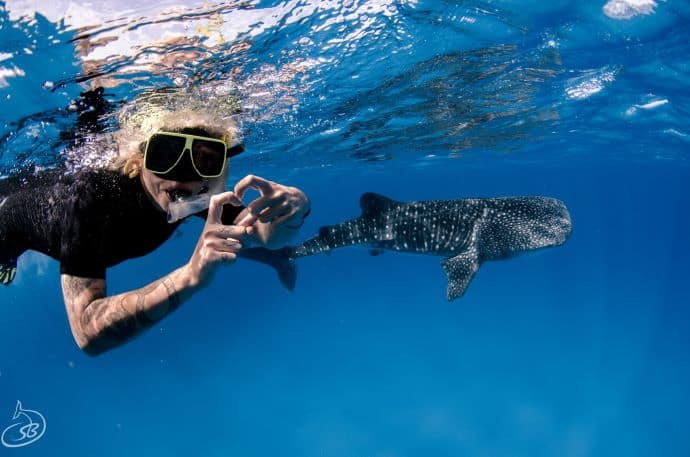 Swimming with Whale Sharks, photo courtesy of Exmouth Dive & Whalesharks Ningaloo
Swimming with Whale Sharks, photo courtesy of Exmouth Dive & Whalesharks Ningaloo
7. Swimming with Whale Sharks at Ningaloo
Found throughout the world, Whale Sharks are the largest fish, measuring up to 40 feet long and weighing about 15 tons.
So if they’re around, they’re pretty hard to miss!
Australia has some of the best coastlines for seeing (and swimming with) massive Whale Sharks in the wild. As with many species of Whales, these gentle giants feed primarily on plankton.
Exmouth Dive & Whalesharks Ningaloo offers full-day excursions from the beginning of March to the end of August.
Aside from swimming with the world’s biggest fish, The Deluxe Whale Shark Swim features educational talks from experts and a good chance of being entertained by Dolphins.
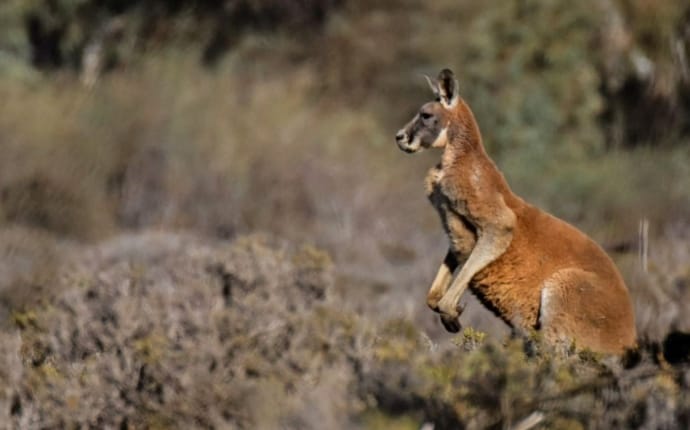 Red Kangaroo courtesy of Murray River Trails
Red Kangaroo courtesy of Murray River Trails
8. Tracking Red Kangaroos on the Murray River
The macropod family of marsupials includes Kangaroos, Wallabies, Wallaroos, Quokkas, and Pademelons.
The largest of these is the Red Kangaroo: Males can grow up to 6 feet tall and nearly 200 pounds.
They’re found throughout much of mainland Australia, especially in arid regions. They’ve evolved to have awesome water conservation capabilities, and can move at speeds surpassing 35 miles per hour!
Although they live in small groups, Red Kangaroos are known to congregate in large numbers where food is plentiful.
Murray River Trails offers a 3-day Murray River Safari each year in the spring and fall seasons. This tour features guided walks, canoeing, and outback drives, with Koalas, Kangaroos, and tons of native birds on the itinerary.
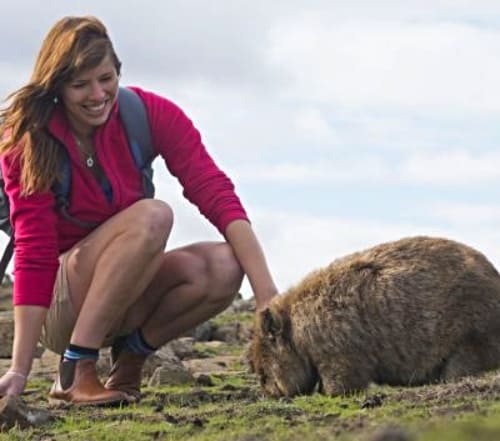 Wombat on Maria Island, photo courtesy The Maria Island Walk
Wombat on Maria Island, photo courtesy The Maria Island Walk
9. Walking with Wombats on Maria Island
The Wombat is another Australian marsupial with a small habitat range that includes the southeastern coast of the mainland and all of Tasmania.
Wombats are stout, ground-dwelling creatures that can weigh up to 60 pounds and dig down to 6 feet underground. Their tunnels are known to stretch up to about 100 feet long.
Wombats are nocturnal herbivores. They produce just one offspring per year in the Australian spring/summer, and the mother carries the joey in her pouch.
For Australian visitors hoping to have a Wombat encounter, The Maria Island Walk (in Maria Island National Park, off the eastern coast of Tasmania) offers a good chance.
The tour is operated by Ian and Bronwyn Johnstone, who have geared it to be a “soft adventure experience,” with good food, fine Tasmania wine, and friendly guides.
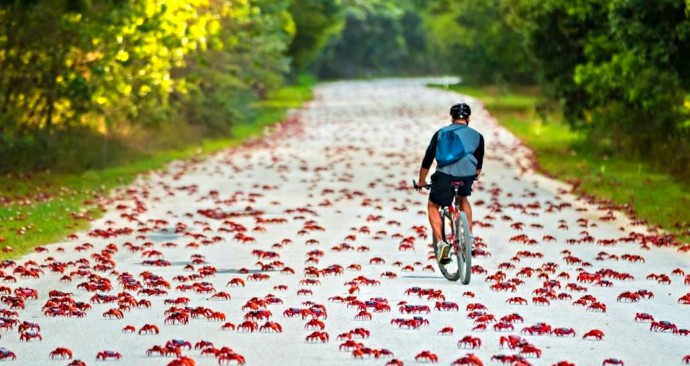 Red Crab Migration on Christmas Island, photo courtesy of Indian Ocean Experiences
Red Crab Migration on Christmas Island, photo courtesy of Indian Ocean Experiences
10. Witnessing Droves of Red Crabs on Christmas Island
Christmas Island is known for its Red Crabs, because they migrate there in droves. Estimates put the remarkable number at somewhere around 120 million crabs!
In November and December of each year, Christmas Island is basically completely carpeted in crustaceans.
It gets so crazy that the staff of Christmas Island National Park has to shut down roads and put up barriers in order to protect them.
Indian Ocean Experiences hosts an 8-day, 7-night tour called Christmas Island Ultimate Wildlife.
Aside from the crabs, the island is home to amazing rainforests, coral beaches, rugged cliffs, and stellar reefs. Animals, especially birds, are essentially everywhere. –by Jonathon Engels
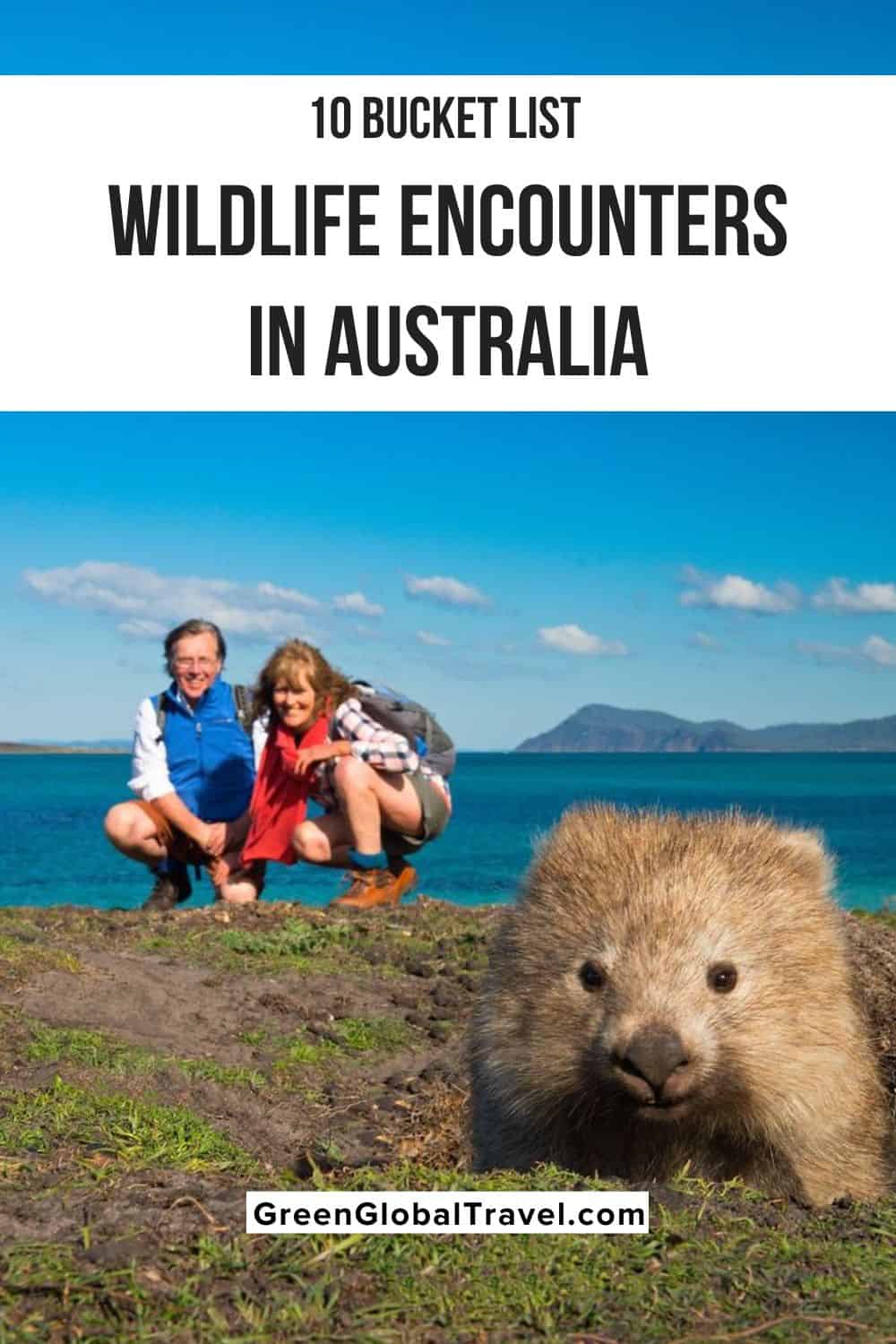

The post 10 Bucket List Australian Wildlife Encounters appeared first on Green Global Travel.
















